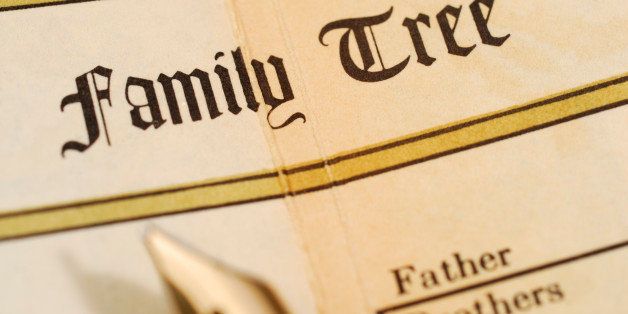
When I began graduate school at Drexel University in Philadelphia in January 2013, I was excited to begin a new phase of my life. However, I also had another project that I wanted to work on besides my graduate studies: completing my family tree. The task of compiling a family tree is challenging enough, but for me, there were two specific challenges. The first challenge was that my maternal grandparents both passed away before I was born. I have to turn to additional sources beyond my mom's siblings to find more detailed information about her family. Since my maternal grandfather was from Philadelphia, I had hoped to use local records to find out more his family while I'm in graduate school. The second challenge for my family tree was personal and deals with my struggles with my biracial identity. My mother's a white American with German and English ancestry, and my father's an Indian immigrant. I started my family tree as part of a project for an undergraduate class and completed most of it for one or two generations on each side of my family. However, I discontinued the project after I graduated because my parent's divorce made my family research too painful for me.
My parents' divorce was difficult because it did not end on good terms, but it was especially difficult for my three siblings and me because my parents are two different races and two different nationalities. Once my parents separated, I felt as though my racial identity was split in half. I've over-analyzed my racial identity since I was young, but my identity struggles were even more pronounced in the rural, predominantly-white town in Northwest Central Pennsylvania where I grew up. By the time I reached high school, I felt as if I didn't fit in with my white peers. There were only four or five non-white students at my high school of about 800 students, three of whom were Indian, but they were in different social circles than me. When my family visited India before my parent's divorce, the trip only made me feel disoriented. My dad never taught me Hindi or Malayalam, the language my father's family spoke since they were from the state of Kerala in south India. I felt ashamed that I couldn't even speak with my own grandmother when I met her for the first time, and I returned to the U.S. with a heavy heart.
My problems regarding my racial identity as an American are similar to those faced by other multi-ethnic people. In an undergraduate writing class that I took on autobiography, I learned that identity struggles regarding race and ethnicity in the United States have been documented in first-hand accounts by authors of multiple racial and ethnic backgrounds throughout the country's history. When my professor for the class asked us to start a family tree as part of a writing project on personal history, I was hesitant to begin. I was worried that bringing both sides of my family together for a family tree would be too much for me to handle given my past. I've always had difficulty talking openly with my father, and that worsened after I left for college and had limited contact with him. I talked to my professor about my reservations, and she told me, "Look at the project as an opportunity to find out more about yourself rather than focusing on the challenges."
With my professor's advice, I began my research and became more and more engrossed in finding out about both sides of my family. As I started doing online research on websites like Ancestry.com, I had an easier time finding records for my American mother's side of the family than my father's. Although I enjoyed learning more about my mother's family, I felt guilty because I had difficulty finding records about my Indian dad's family. My problem in my research meant that I had to reach out to my dad to learn more about his family. At first I considered the thought of having anything but an obligatory check-in phone call with my dad as a roadblock. But with my professor's advice in mind, I viewed that challenge as an opportunity. I called him and talked to him about the project, and I ended up learning so much more about my heritage. For instance, I knew that my last name was "James" because my dad didn't Anglicize his name when he immigrated to the U.S. Certain Indian Christian denominations, including my father's Eastern Catholic family, wrote their names with their family names first, then their first name, then their baptismal name. However, I didn't know that my dad's family name, Vaniyapurayil, partially meant "trader" or "merchant" in Malayalam because my ancestors were active in the spice trade in south India. Eventually, I gained enough information about my father's family back to several generations and successfully completed my project. I felt grateful that talking to my dad about our family history was a channel for open communication for both of us.
Working on my family tree isn't a cure-all for my personal struggles -- I'm still working on rebuilding my relationship with my father. Nevertheless, I encourage everyone who's curious about their ancestry to start their own family tree research. Even though the task might be difficult in various aspects, as my professor advised me, building a family tree can be an effective first step for gaining a greater understanding of ourselves through our family history.